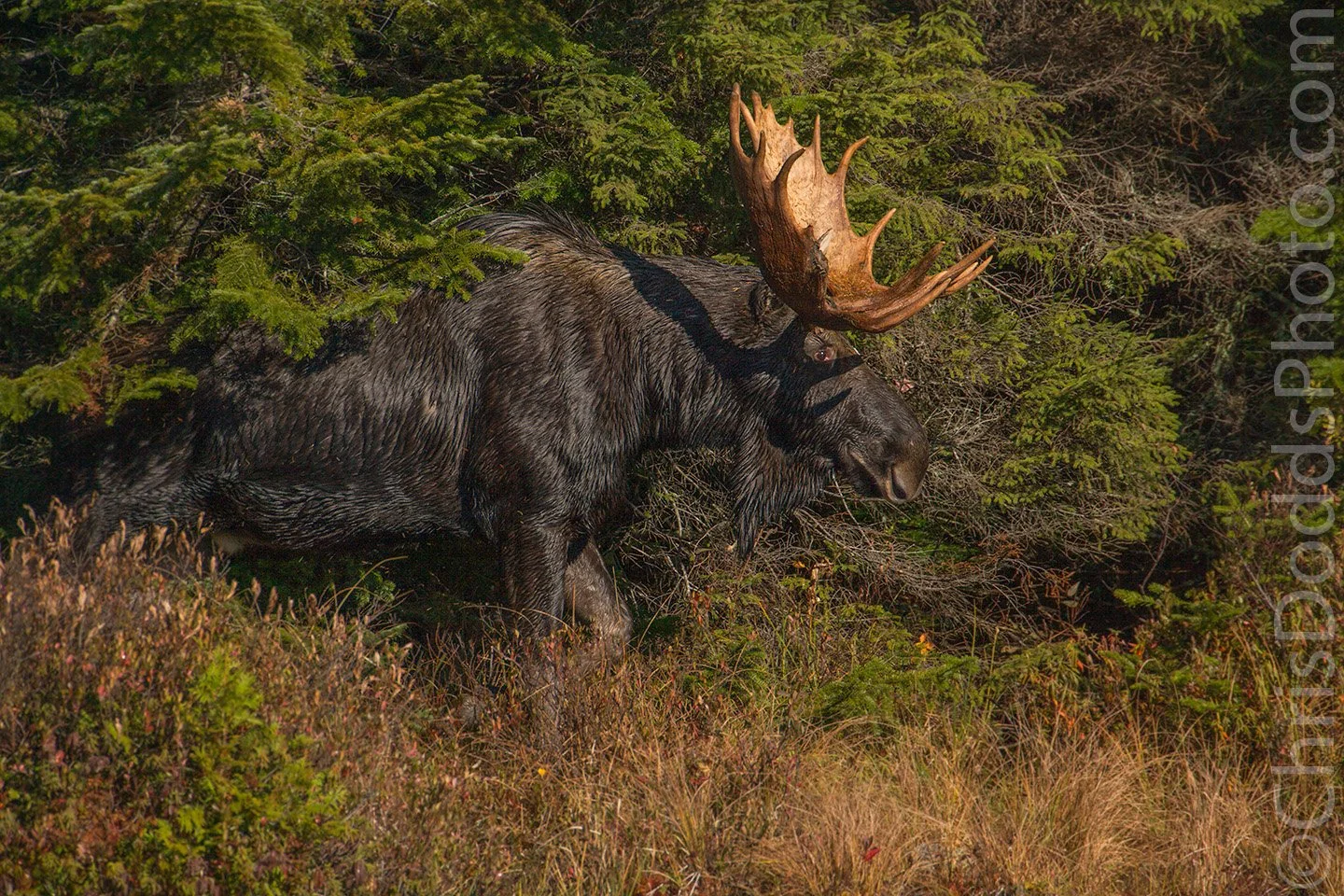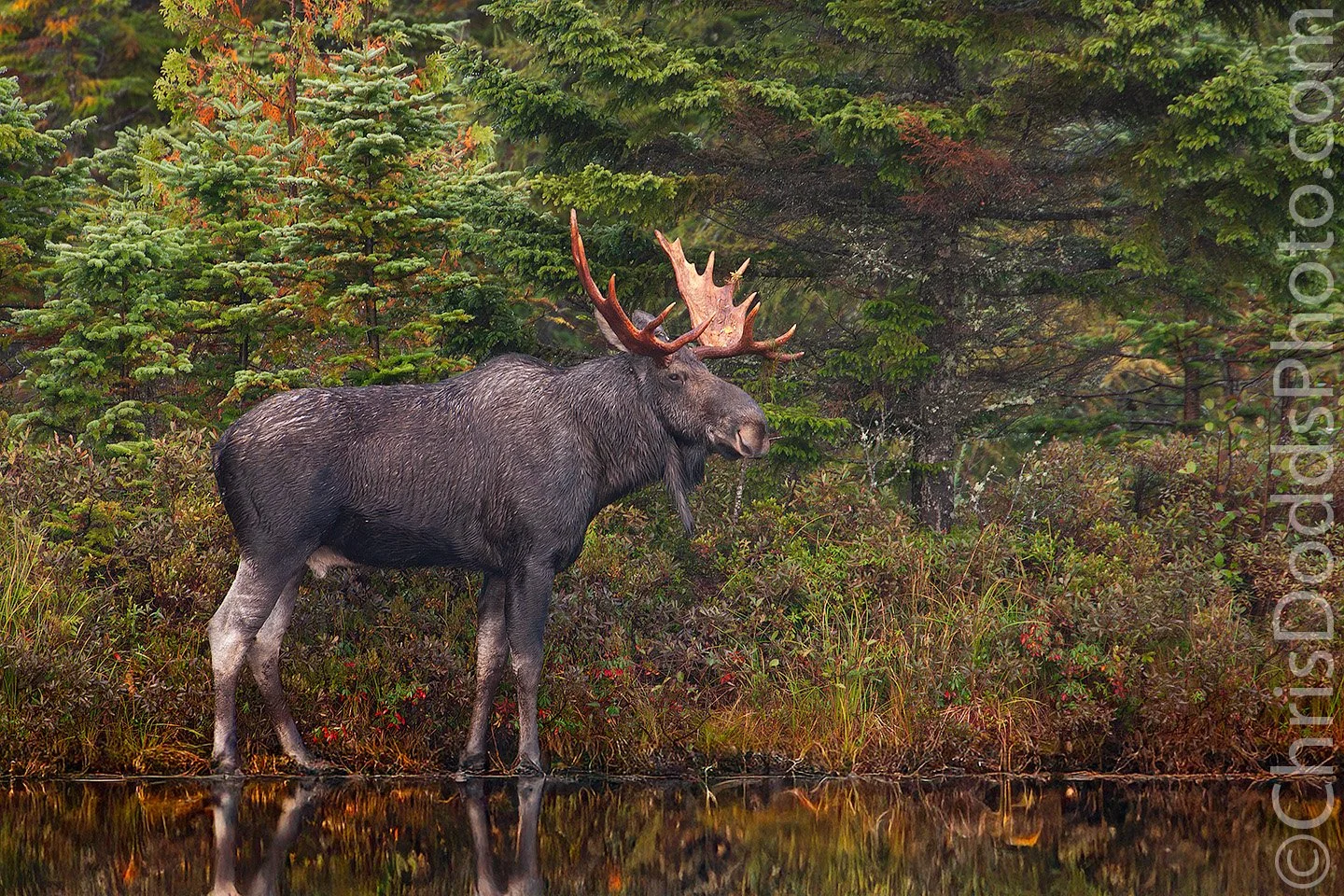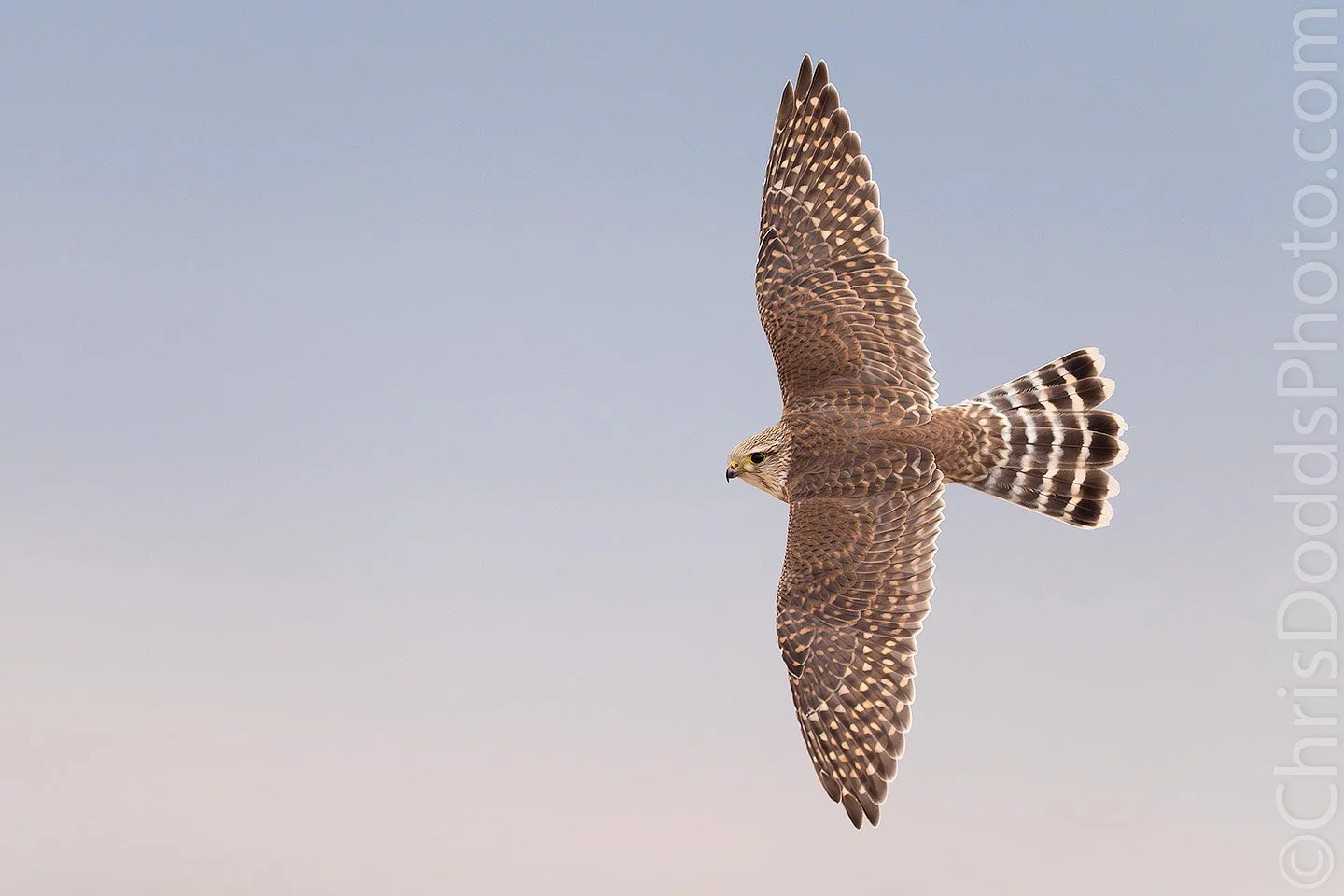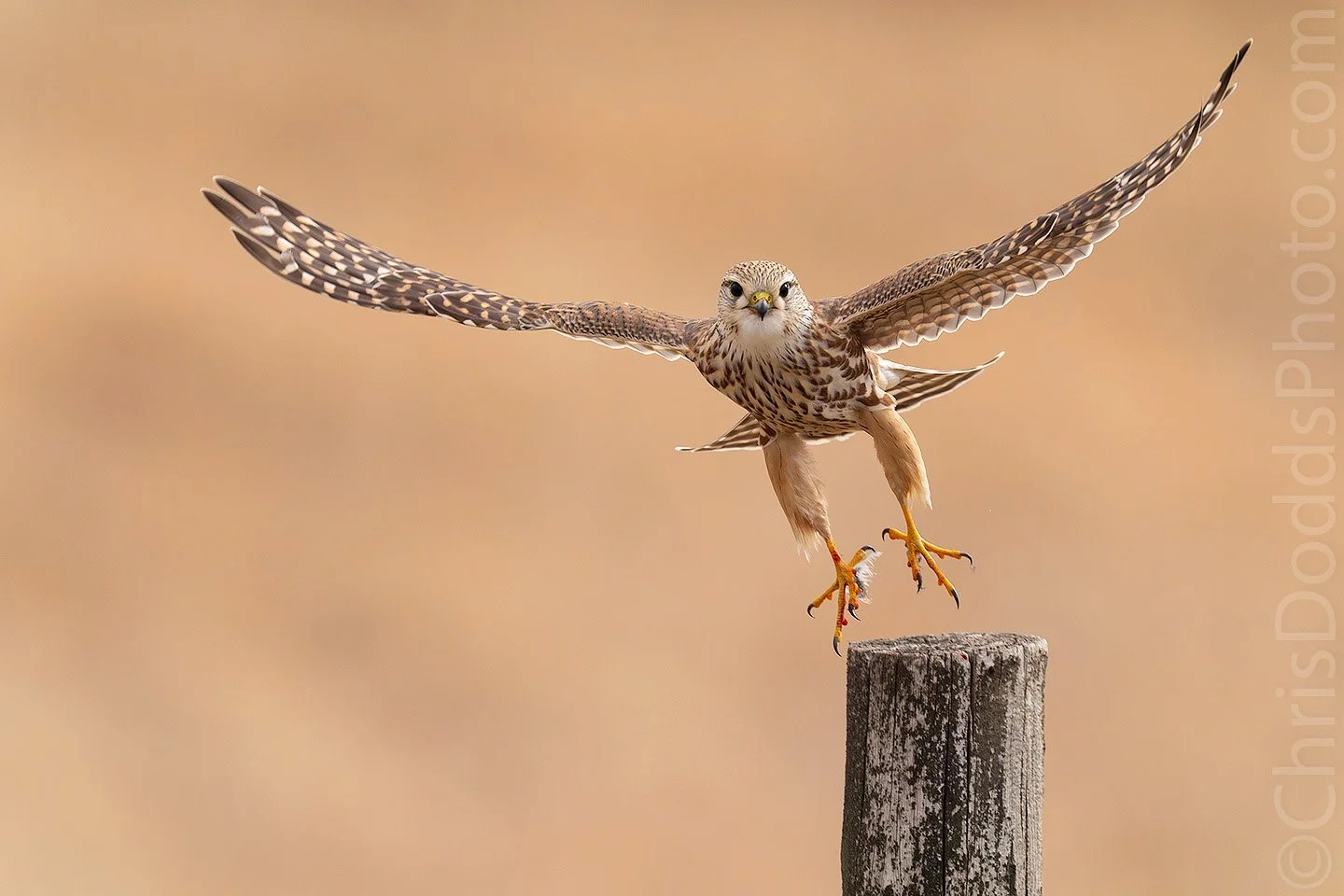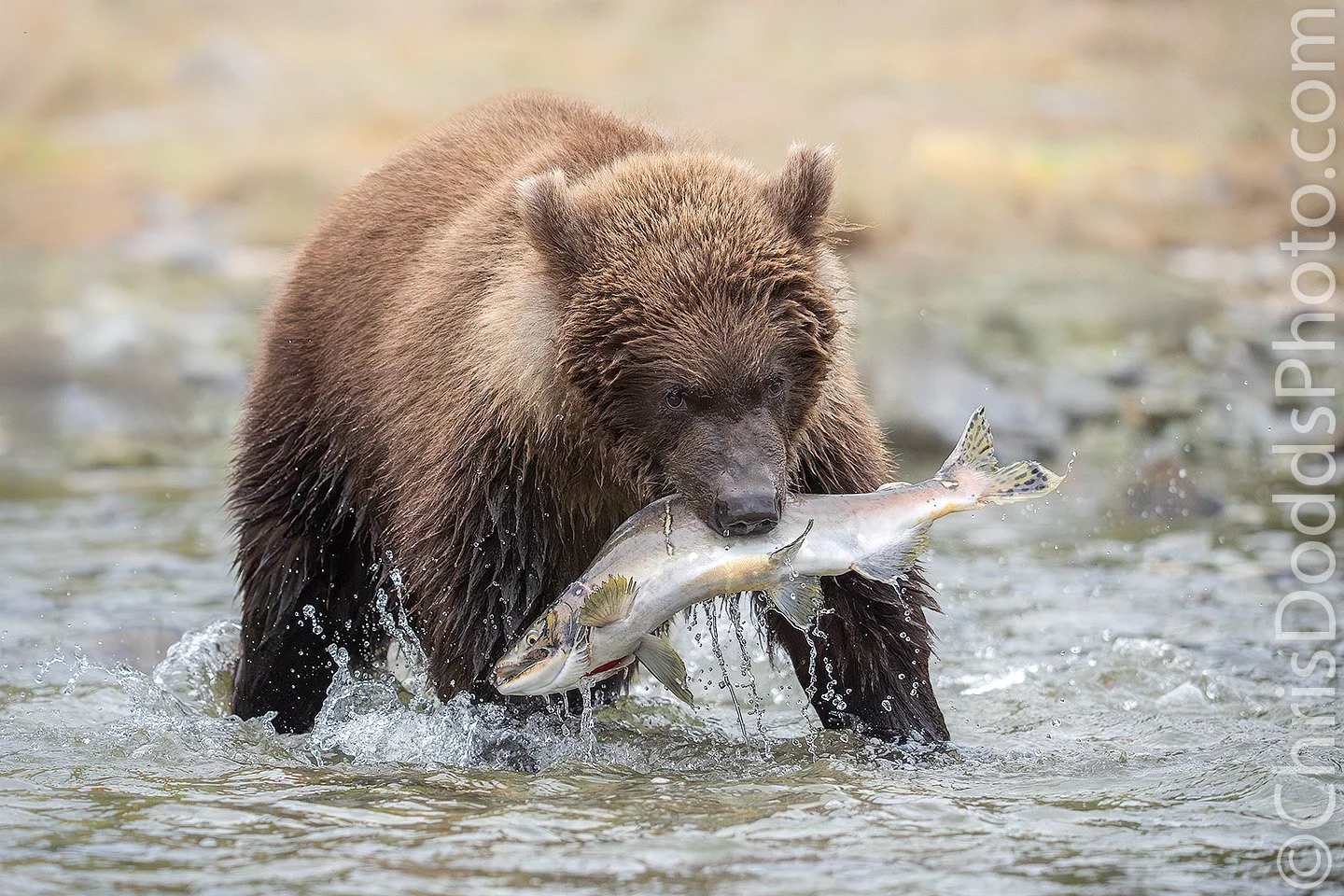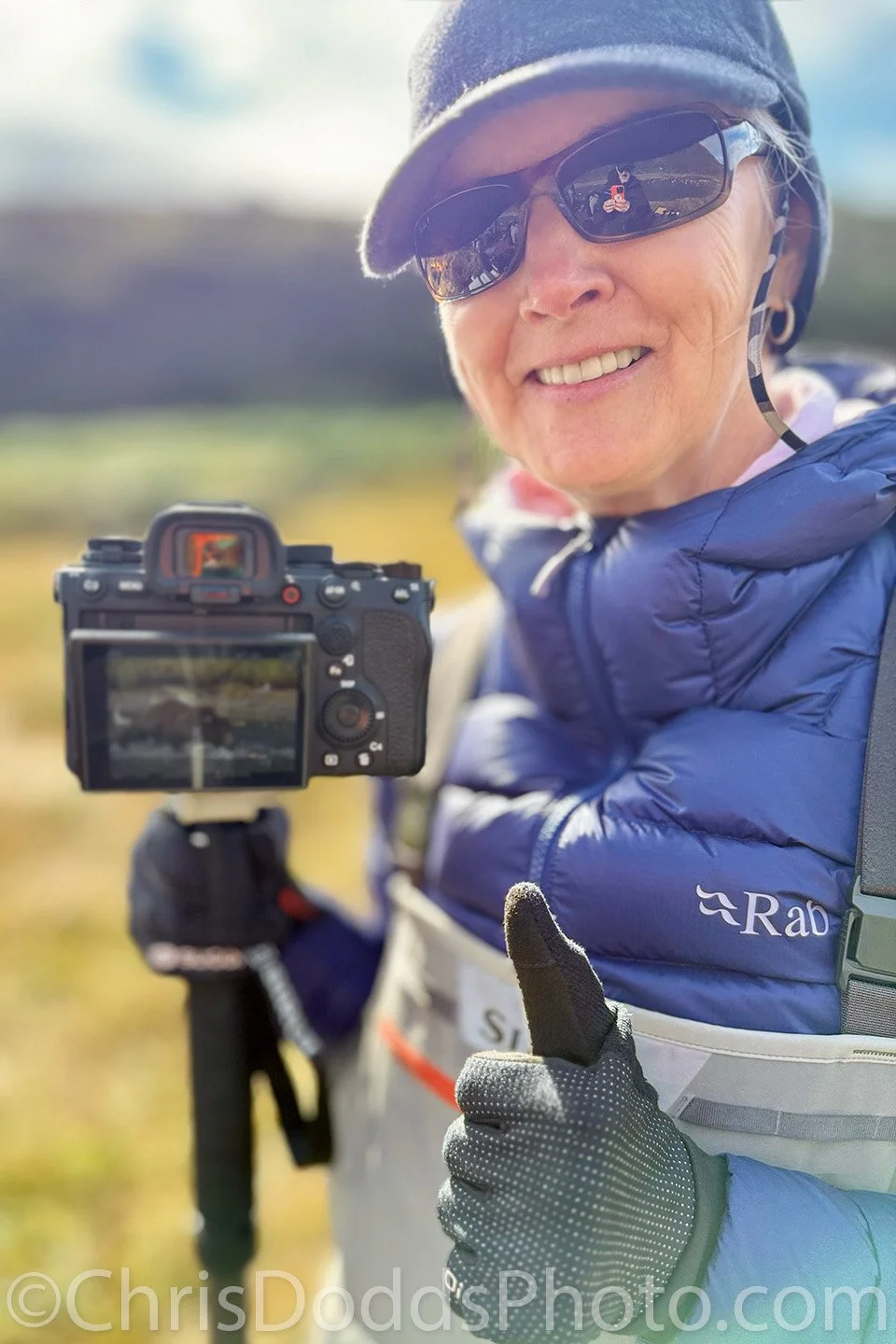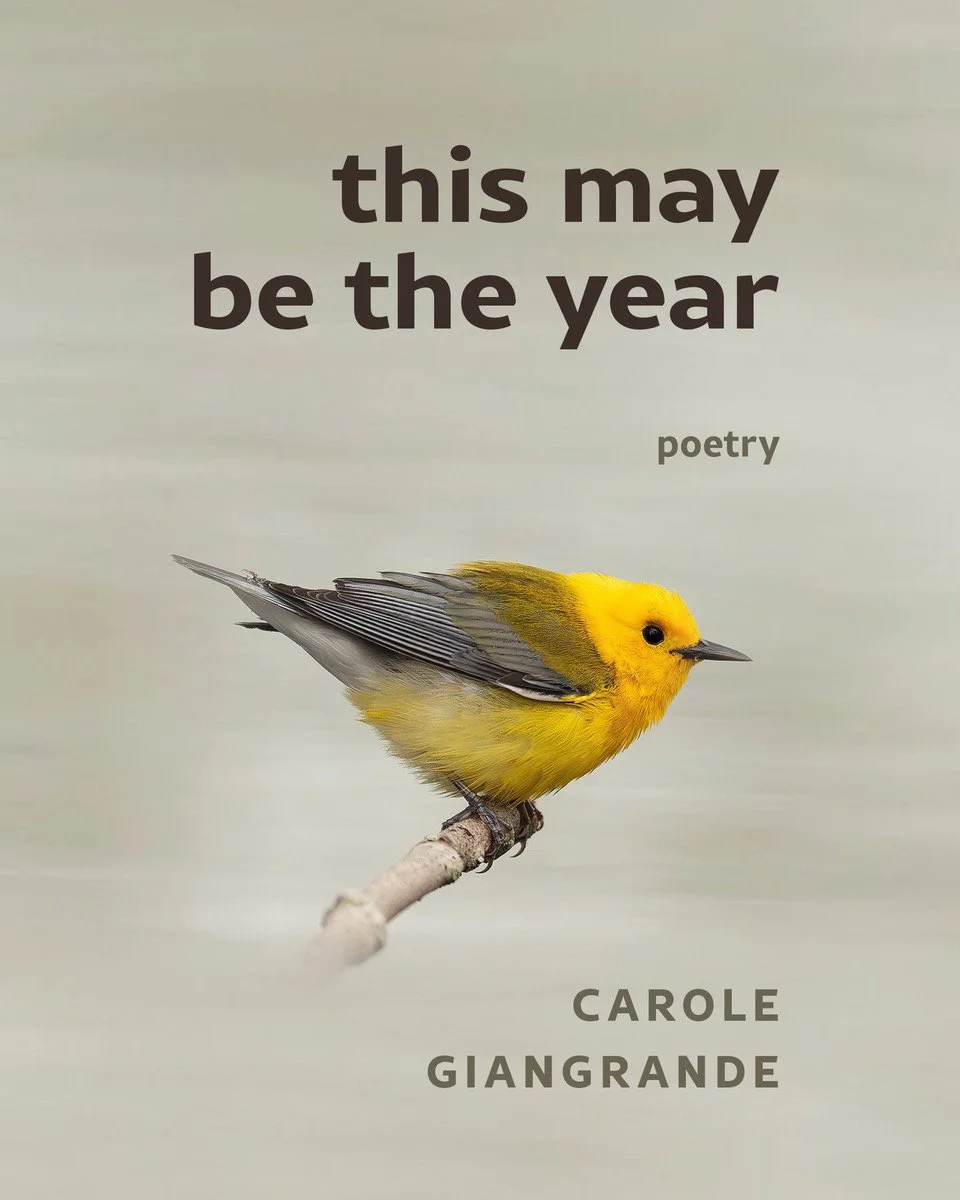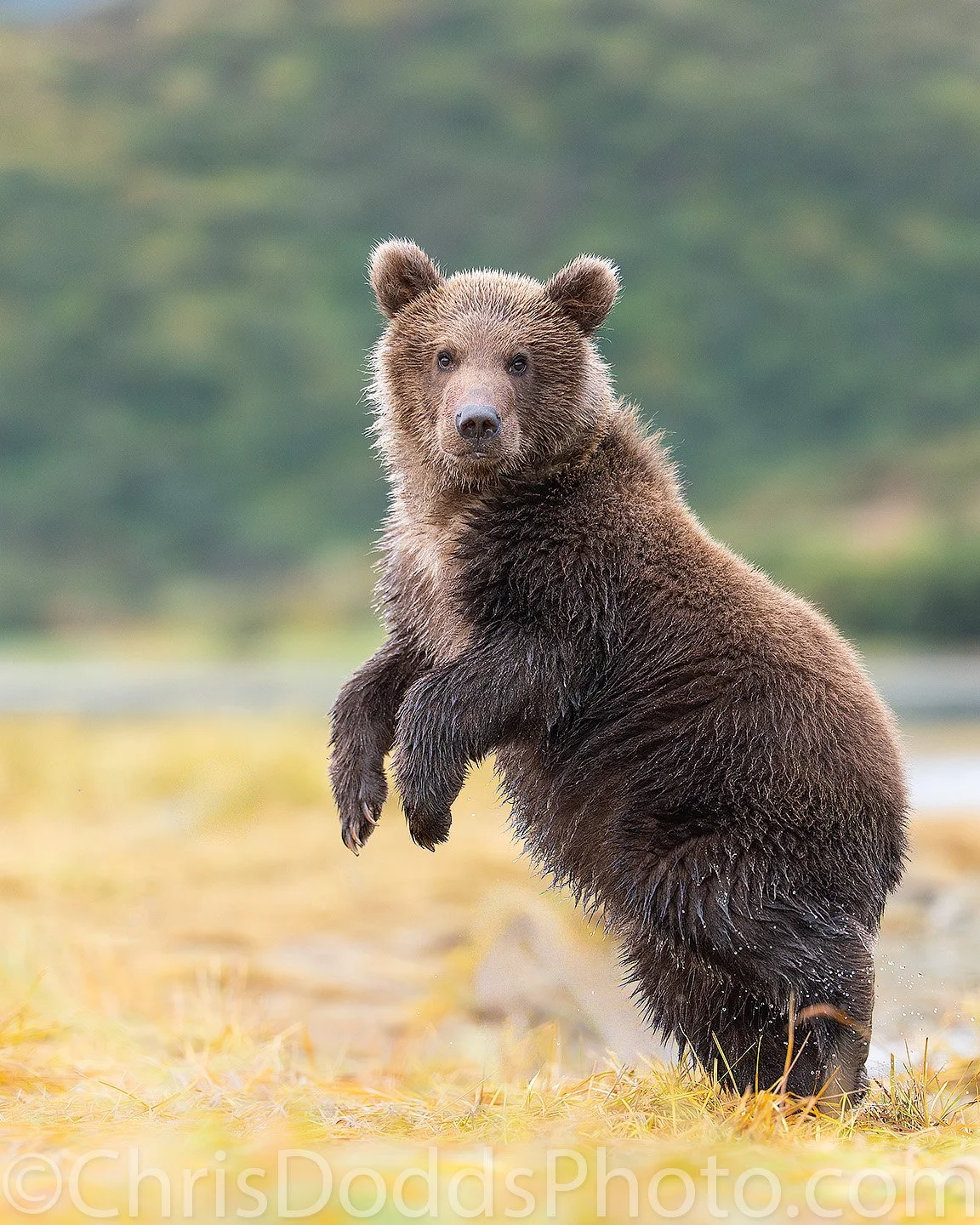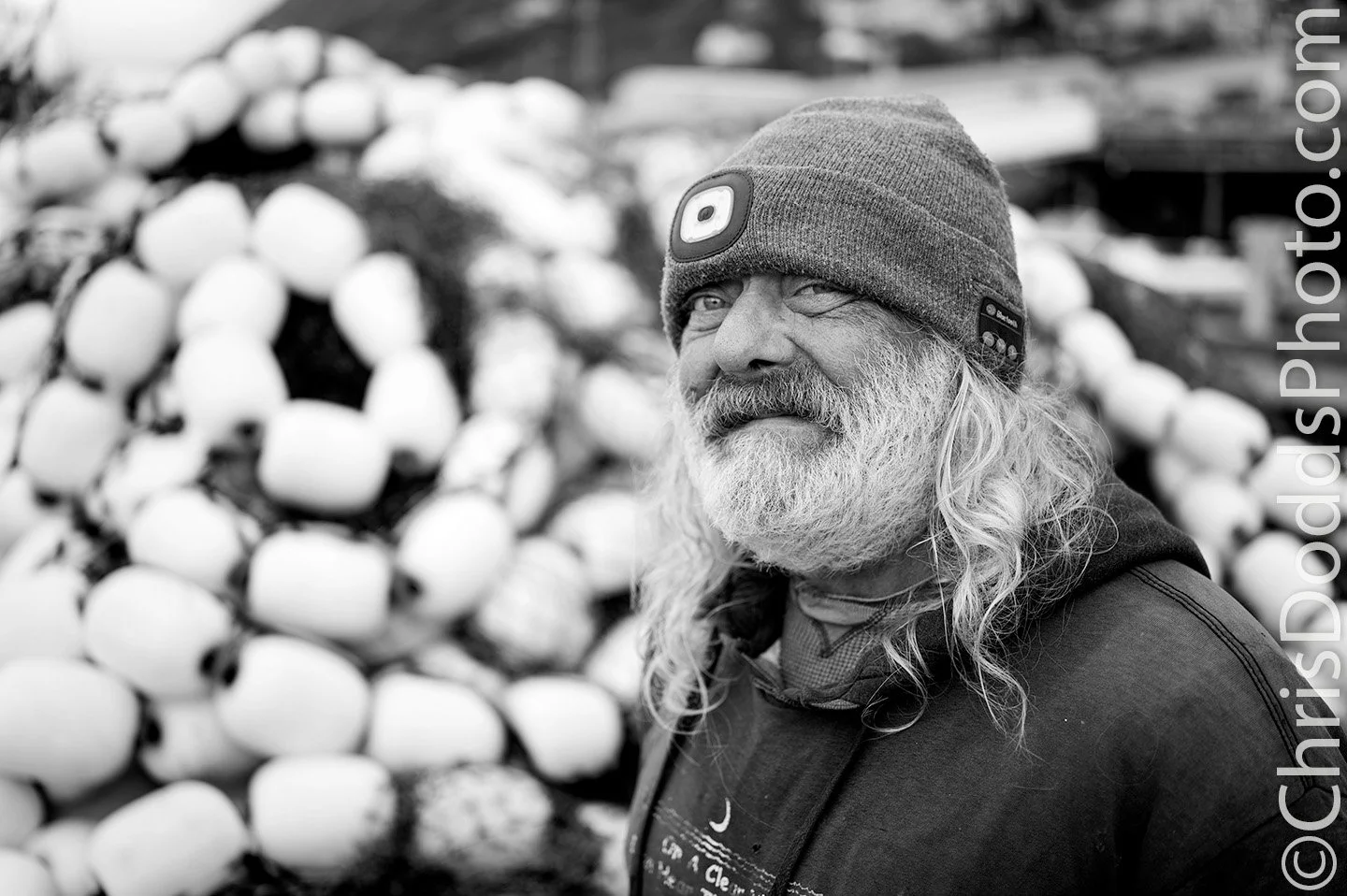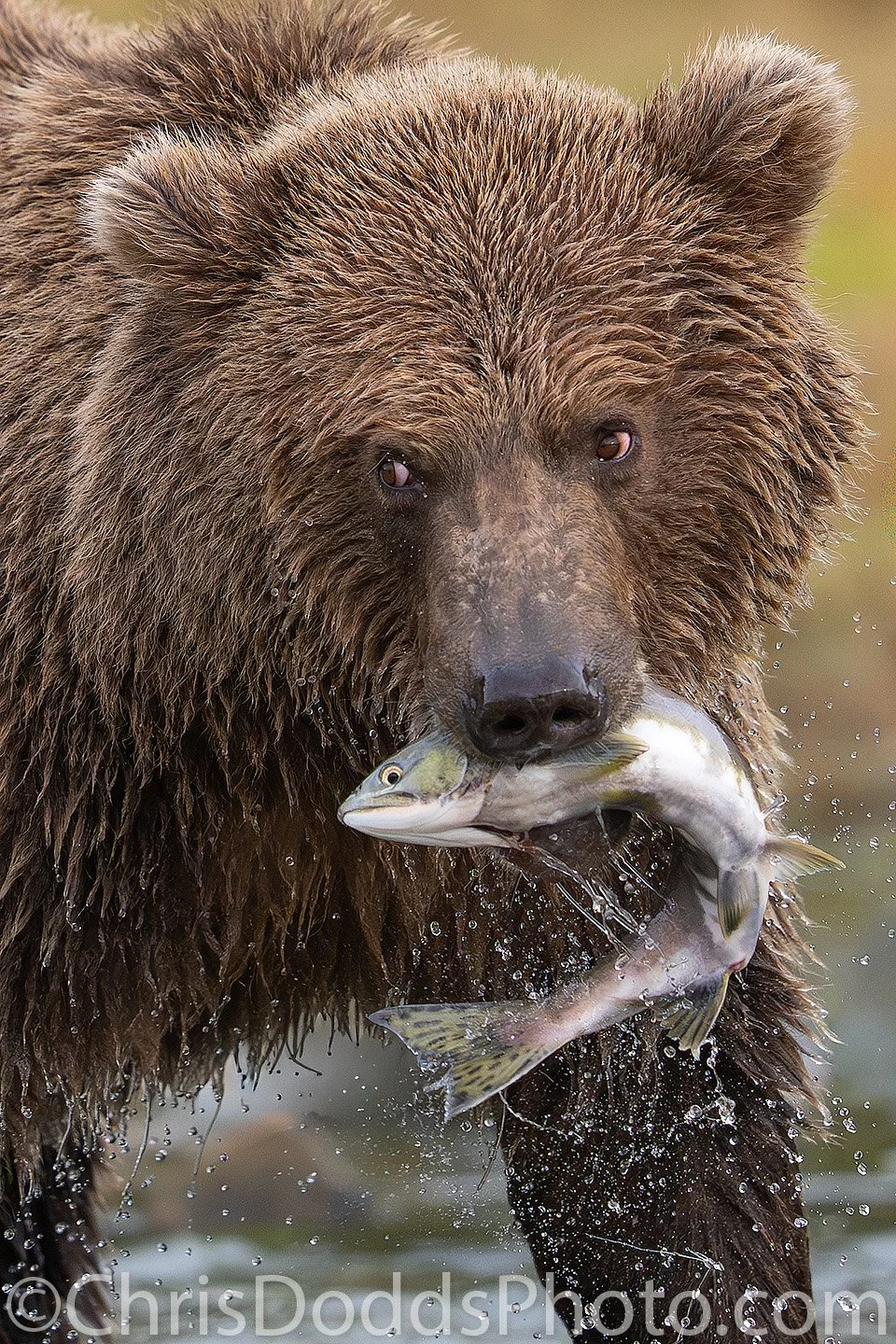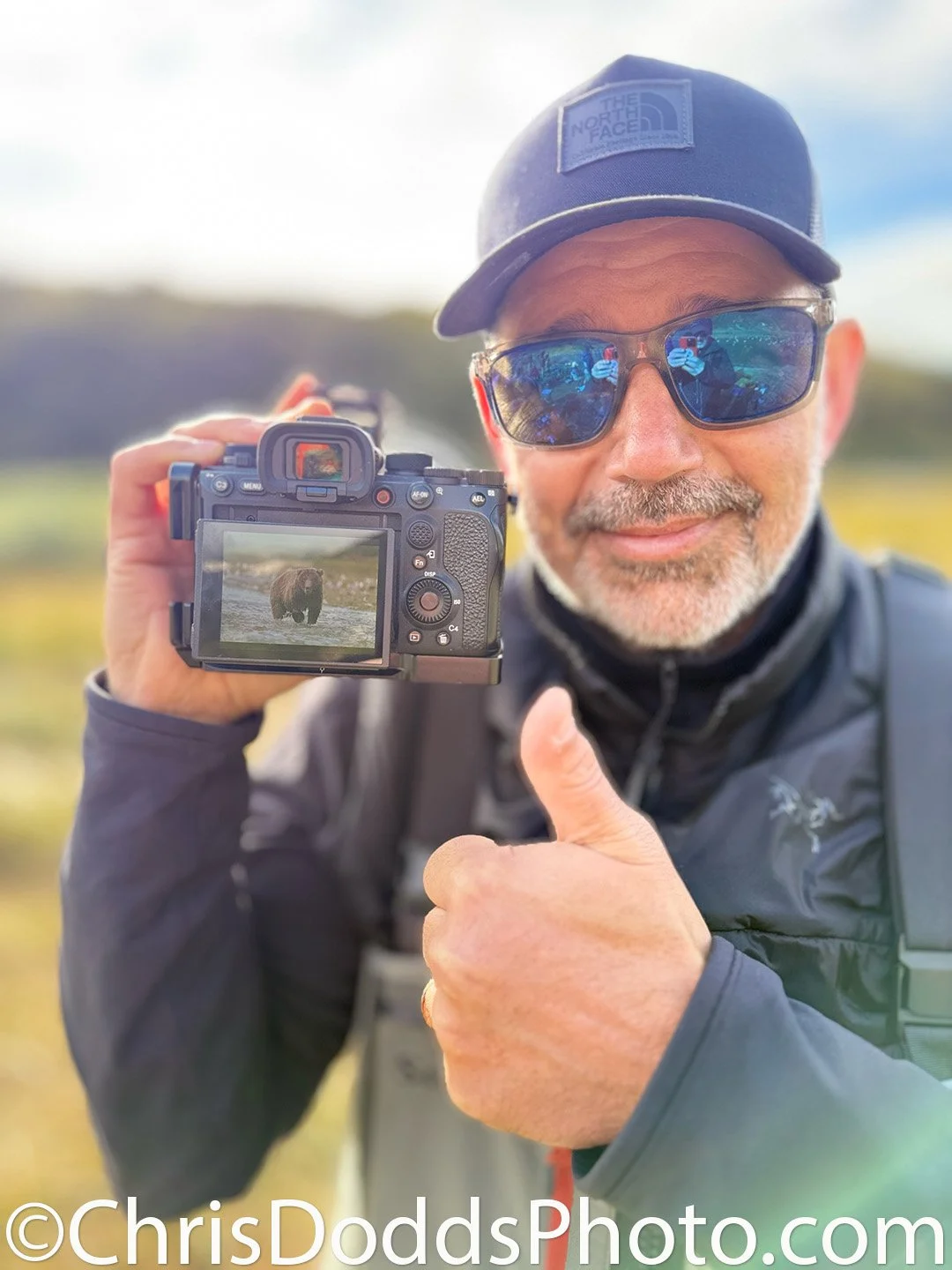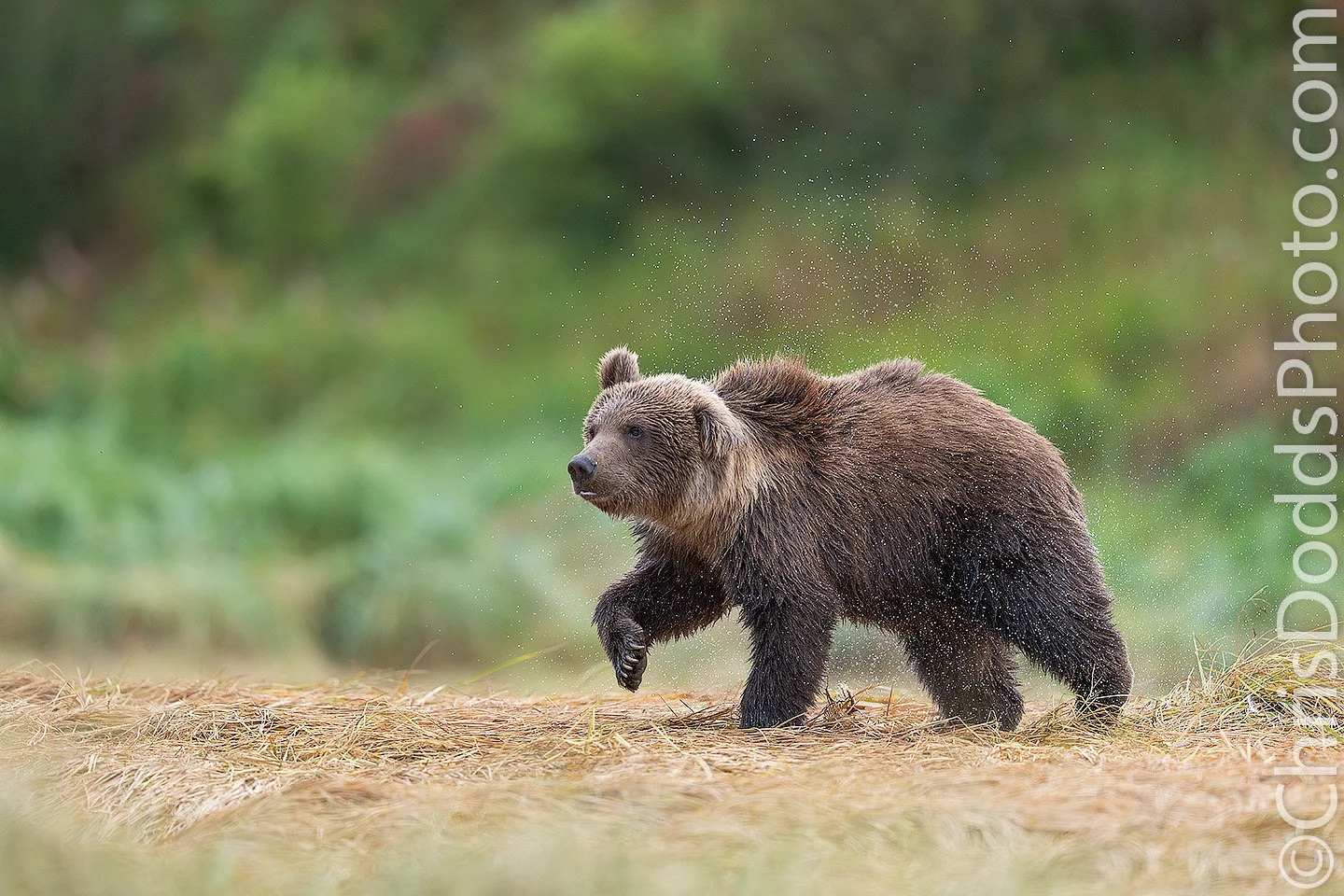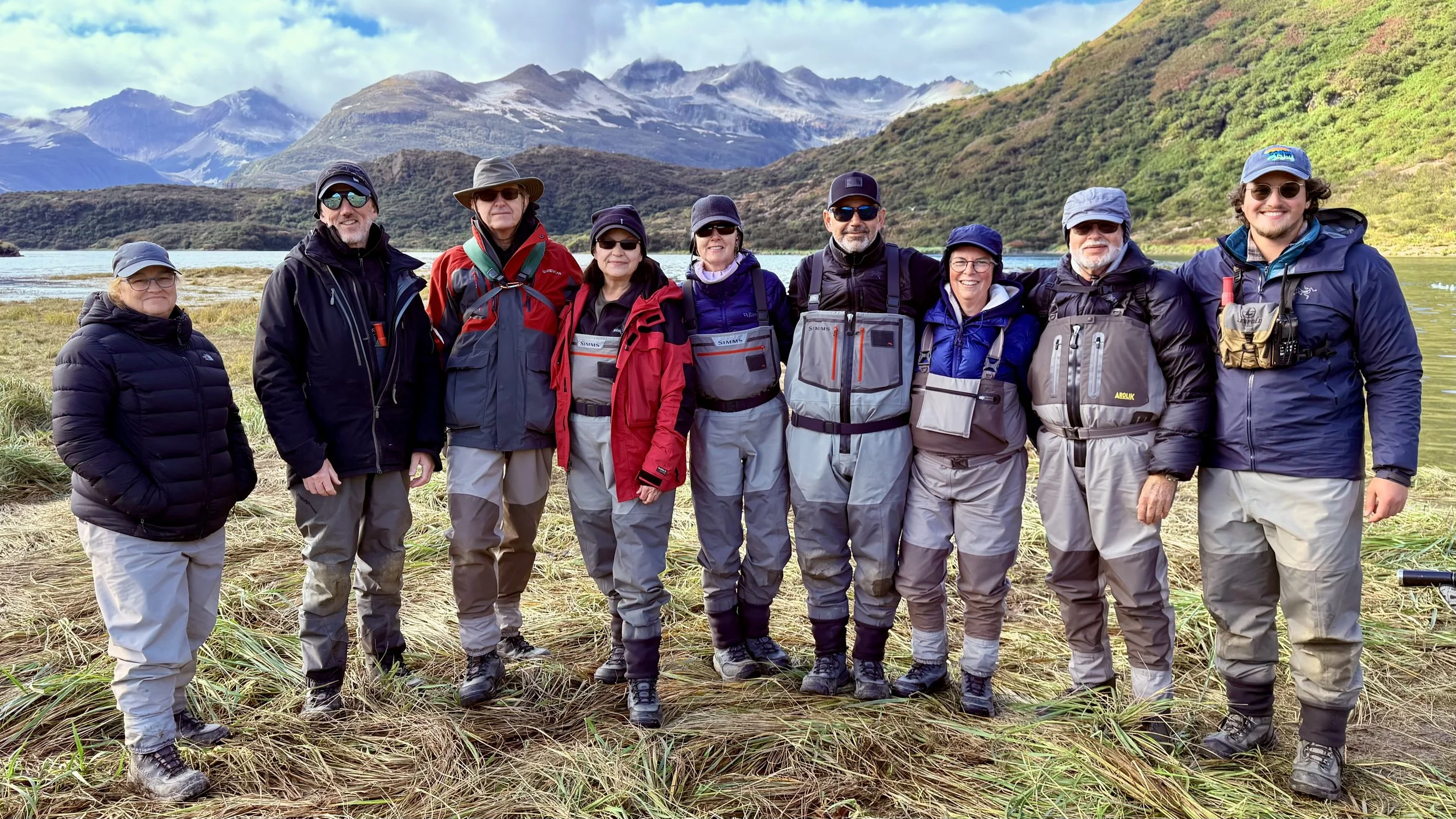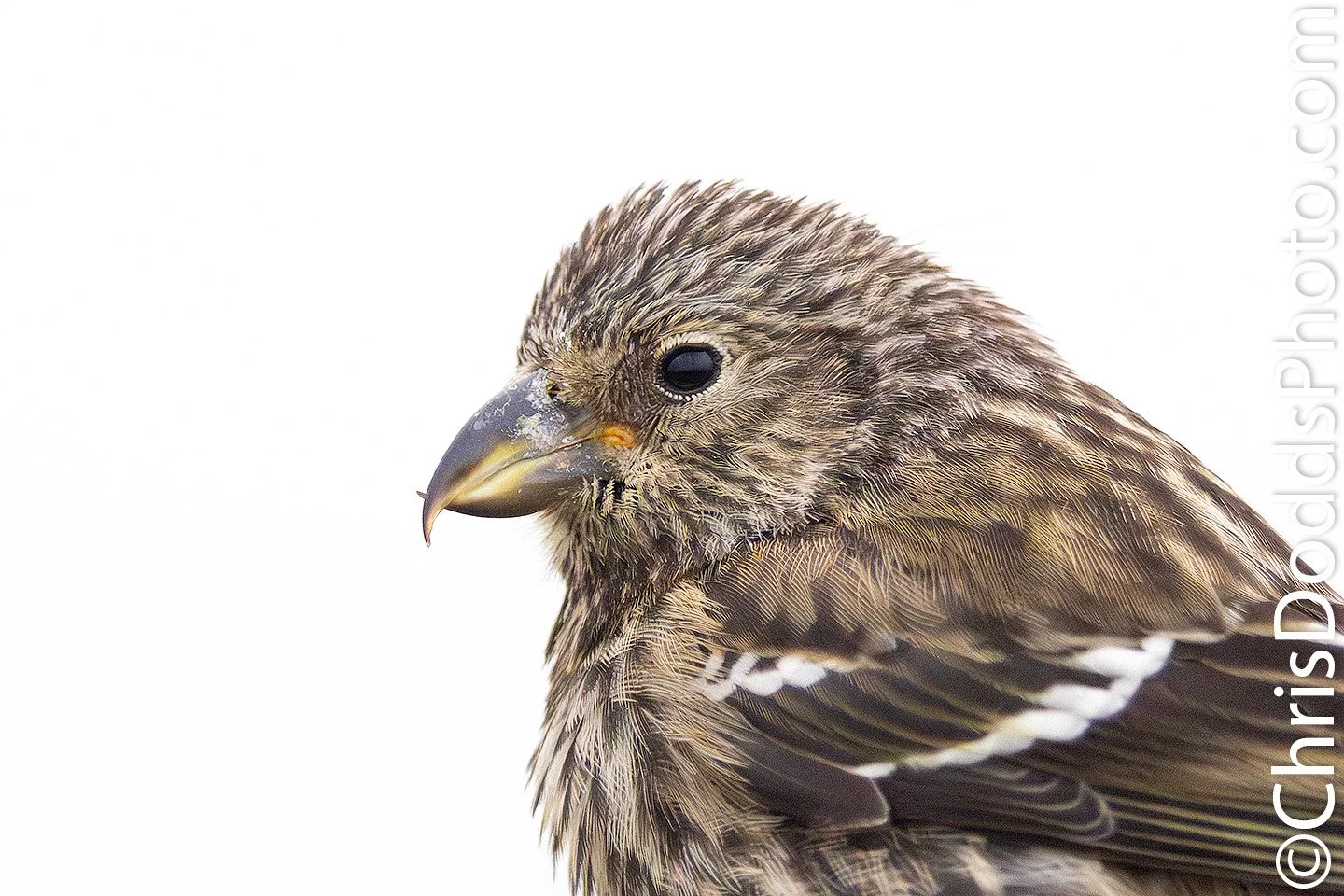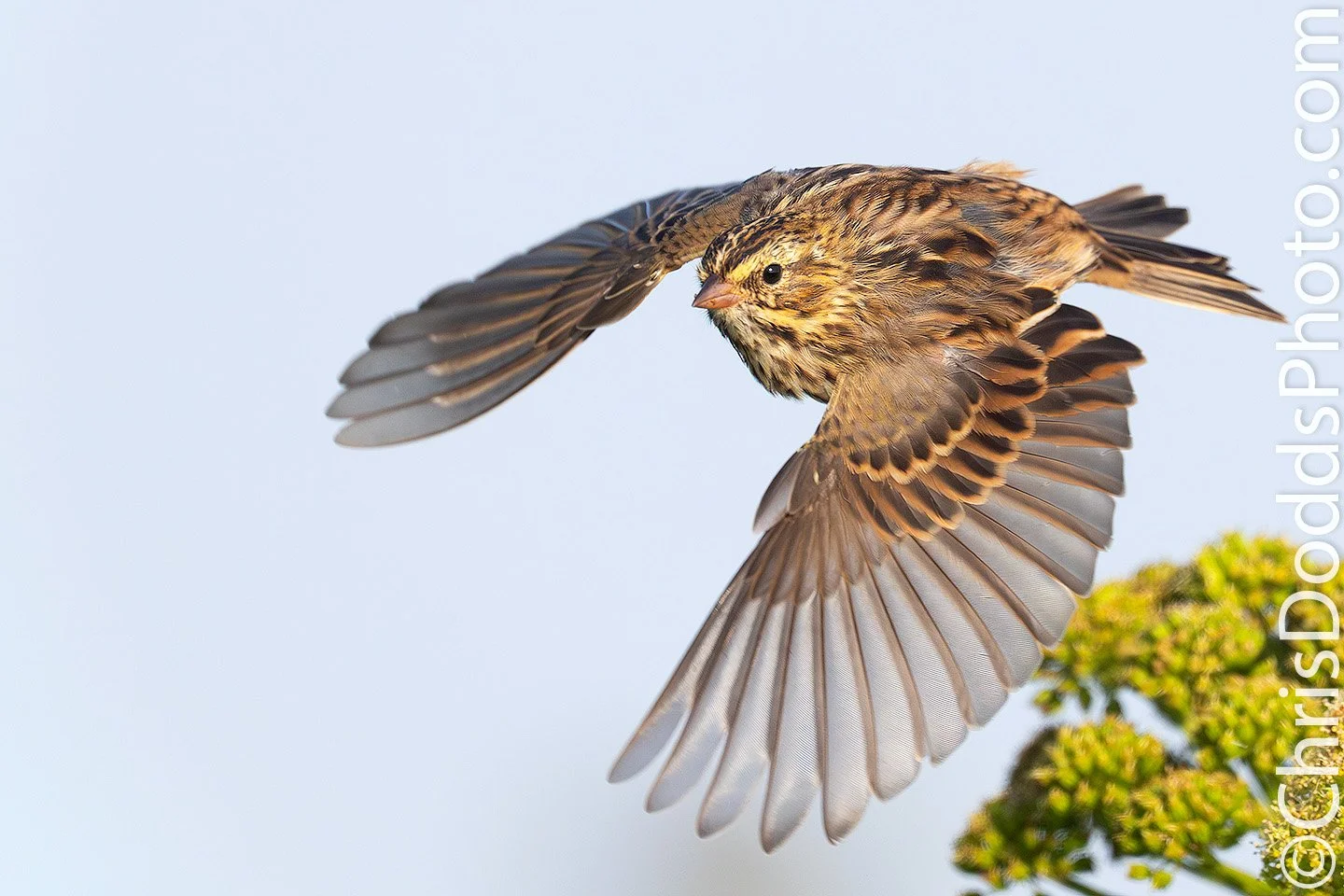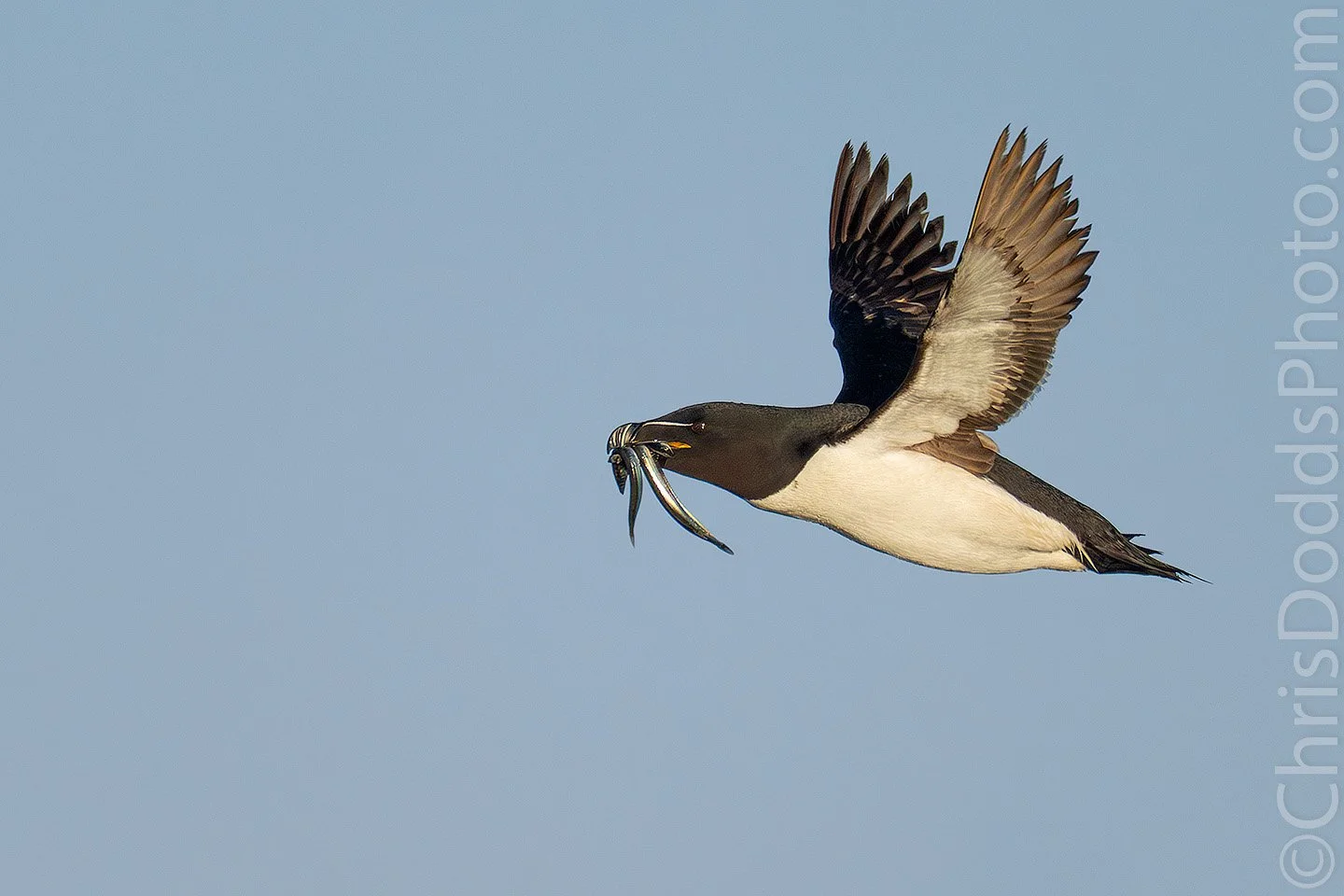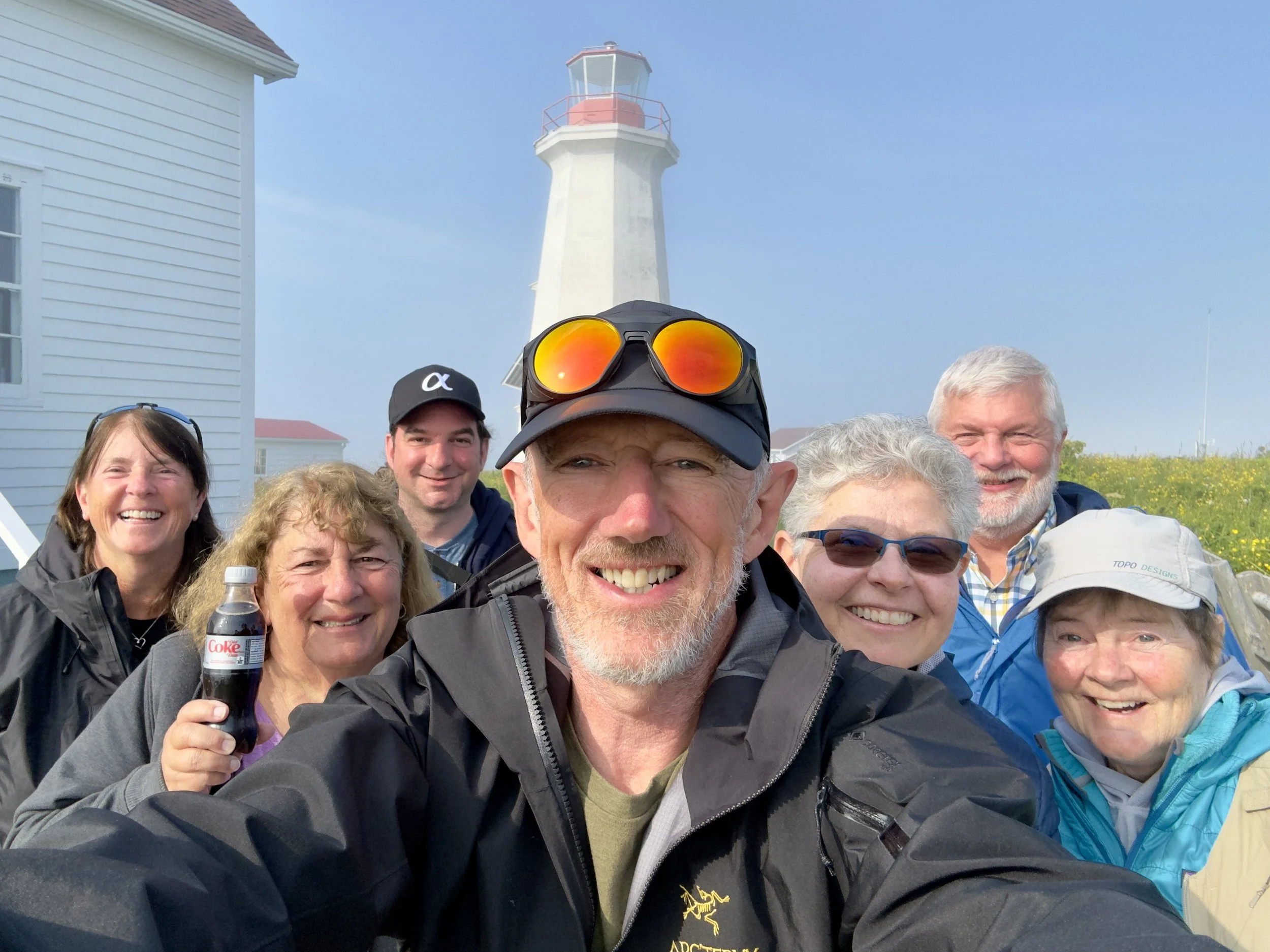A dripping wet Coastal Brown Bear watches a salmon that escaped her lunge! This year’s September Ultimate Brown Bears of Alaska Workshop was absolutely unforgettable. We witnessed one of the strongest salmon runs in decades, and it showed — the rivers were boiling with fish, and the bears were feasting like royalty.
Everywhere we turned, the bears were massive, healthy, and focused on fattening up for winter. With so much food available, the mothers will head into their dens well-prepared — and that means we can likely expect a bumper crop of cubs emerging next June!
Coastal Brown Bears (Ursus arctos gyas) depend heavily on salmon to build the fat reserves that carry them through hibernation. When salmon runs are strong, females have more energy to conceive and raise multiple cubs — and their chances of survival skyrocket. Cubs are actually born in the den in midwinter, usually around January or February, and don’t make their first public appearance until late spring.
It’s a powerful reminder that healthy salmon runs ripple through the entire ecosystem. Those nutrients brought upstream by spawning salmon feed everything from bears to eagles — even the forests themselves. This year’s abundance of fish doesn’t just feed today’s bears; it helps shape the next generation of Alaska’s magnificent brown bears.
If you’ve ever dreamed of photographing mothers and cubs in the wild, now’s your chance! My Ultimate Brown Bears of Alaska: Mothers and Cubs Edition runs June 12–19, 2026, and there are only two spots left. Join me for an unforgettable week of wildlife, wilderness, and world-class bear photography in the heart of Alaska.
OFF TOPIC…
Sometimes the best images are the ones you stumble upon while simply paying attention. This oil slick was photographed during a slow walk around Kodiak Harbour in Kodiak, Alaska, before my Ultimate Bears of Alaska Workshop — a day spent chatting with local fishermen, meeting their dogs and crews, and taking in the quiet beauty of working boats and weathered docks, while seeking images of the fishermen whose weathered faces so often tell the tale of a life well lived and a living hard-earned. It’s a reminder that taking the time to look closely usually reveals moments of colour, texture, and reflection hiding in plain sight — even on an overcast, grey day.
Join Me in Toronto at ProFusion Expo 2025! 🇨🇦📸
Join Me in Toronto at ProFusion Expo, November 5 & 6, 2025! 🇨🇦📸
I’m honoured to be presenting again, marking my 11th consecutive year presenting at the show and my 9th year representing Sony!
ProFusion Expo is Canada’s largest photo and video event, and after a decade of success, it’s the must-attend gathering for photographers, videographers and content creators at every level. Whether you’re a seasoned pro, a passionate enthusiast, or an emerging creator — this is your chance to learn, connect and be inspired.
🎤 Event Dates & Hours:
📅 Wednesday, November 5, 2025 — 12:00 in the Sony Booth & 15:30 on the Main Stage.
📅 Thursday, November 6, 2025 — 11:30 on the Main Stage & 13:00 in the Sony Booth.
Don’t miss my free seminar, where I’ll share insights from my imaging journey and you’ll have the opportunity to ask questions and say hello in person.
👉 Register now for free and be sure to stop by & say hello! — I’d love to see you there!



